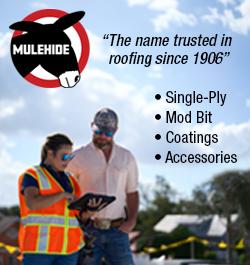UP TO THE MINUTE
Training sales teams to identify and communicate building envelope restoration opportunities
March 29, 2025 at 10:30 a.m.CCS Influencer John Kenney says that contractors can strengthen their value proposition and grow their business by training sales teams to identify and communicate building envelope restoration opportunities.
As a roofing industry expert, I’ve seen how successful contractors build strong, solution-driven relationships with building owners by training their sales teams to identify restoration opportunities — particularly across the entire building envelope, not just the roof. The building envelope includes the roofing system, exterior walls, insulation, doors, windows and waterproofing components. When a sales team understands how to assess the full envelope and communicate restoration needs effectively, it leads to more comprehensive service offerings, greater customer trust and increased revenue opportunities. The key is providing the right training, tools and communication strategies to empower sales professionals to recognize problems and present clear, valuable solutions to building owners.
The first step in training a sales team to identify restoration opportunities is to provide foundational education on building envelope systems. This includes understanding how each envelope component contributes to the building’s performance in terms of energy efficiency, moisture control, durability and occupant comfort. Salespeople don’t need to be engineers or inspectors, but they should be trained to recognize signs of wear, damage and inefficiency in roofs, wall assemblies, flashings and other key areas. Partnering with technical staff or consultants to conduct hands-on training sessions or walkthroughs can significantly enhance this knowledge. Encourage your sales team to learn about common failure points, the lifecycle of different materials and how deferred maintenance can lead to costly issues if not addressed early.
Equipping sales professionals with checklists and visual aids is another practical approach. During site visits, a standardized checklist ensures they look for specific indicators of problems — such as ponding water, deteriorated sealants, rusted metal components, cracked masonry or insulation voids. Photographic evidence, thermal imaging and moisture detection tools can help salespeople document concerns. Providing before-and-after images from past restoration projects can help sales reps explain potential solutions and set expectations for the building owner.
Equally important is the ability to translate findings into a compelling narrative for the building owner. Sales teams must be trained in what to look for and how to communicate the value of restoration clearly and persuasively. Avoiding overly technical language, they should focus on the risks of inaction — such as structural damage, higher energy bills or mold growth — and highlight the long-term savings, improved building performance and potential for insurance or warranty support. Teaching your salespeople to frame restoration as an investment rather than a cost helps shift the conversation from reactive repairs to proactive asset management.
Another effective tactic is incorporating building envelope assessments into routine maintenance or inspection offerings. When contractors position themselves as long-term partners rather than one-time service providers, they open the door to ongoing conversations about restoration. Salespeople should be trained to schedule follow-ups, review inspection reports with owners and propose phased restoration plans when full repairs aren’t immediately feasible. This builds trust, deepens relationships and keeps your company top of mind when future work is needed.
To reinforce training, ongoing support is critical. Regular team meetings, project debriefs and joint site visits with field or technical staff can keep sales professionals sharp and informed. Sharing success stories where restoration opportunities were effectively identified and sold can motivate and inspire the team.
In summary, contractors can strengthen their value proposition and grow their business by training sales teams to identify and communicate building envelope restoration opportunities. By combining technical awareness with customer-focused communication, sales professionals can guide building owners toward smarter decisions that protect their investments and extend the life of their assets.
John Kenney is the CEO of Cotney Consulting Group. See his full bio here.




















Comments
Leave a Reply
Have an account? Login to leave a comment!
Sign In